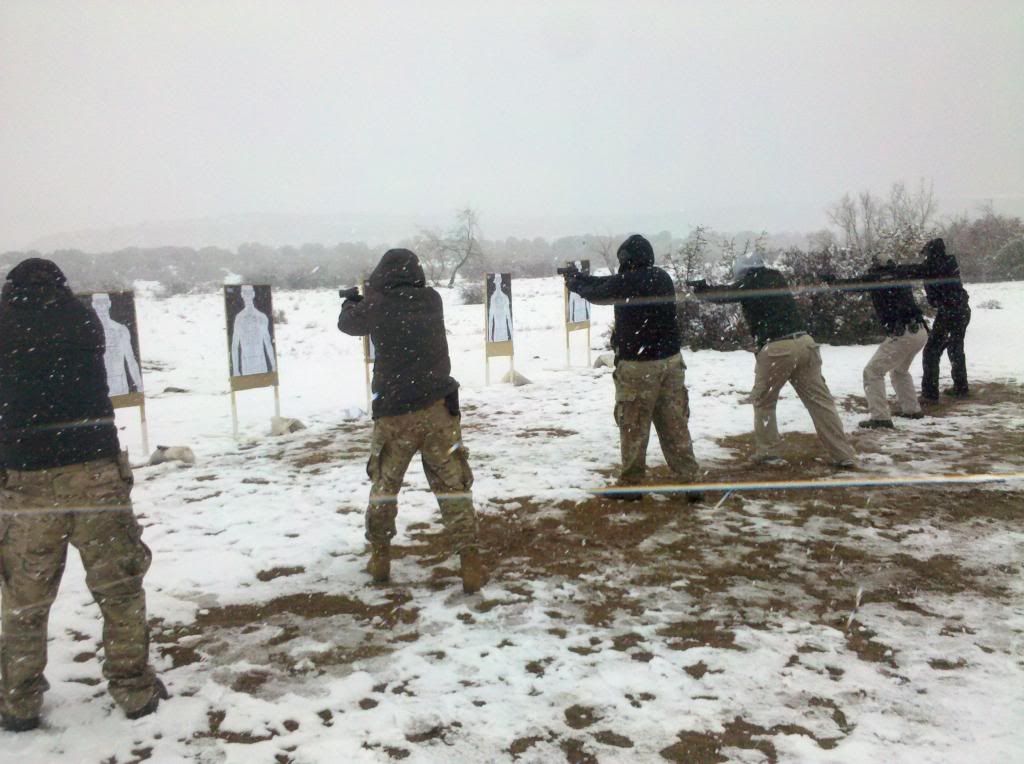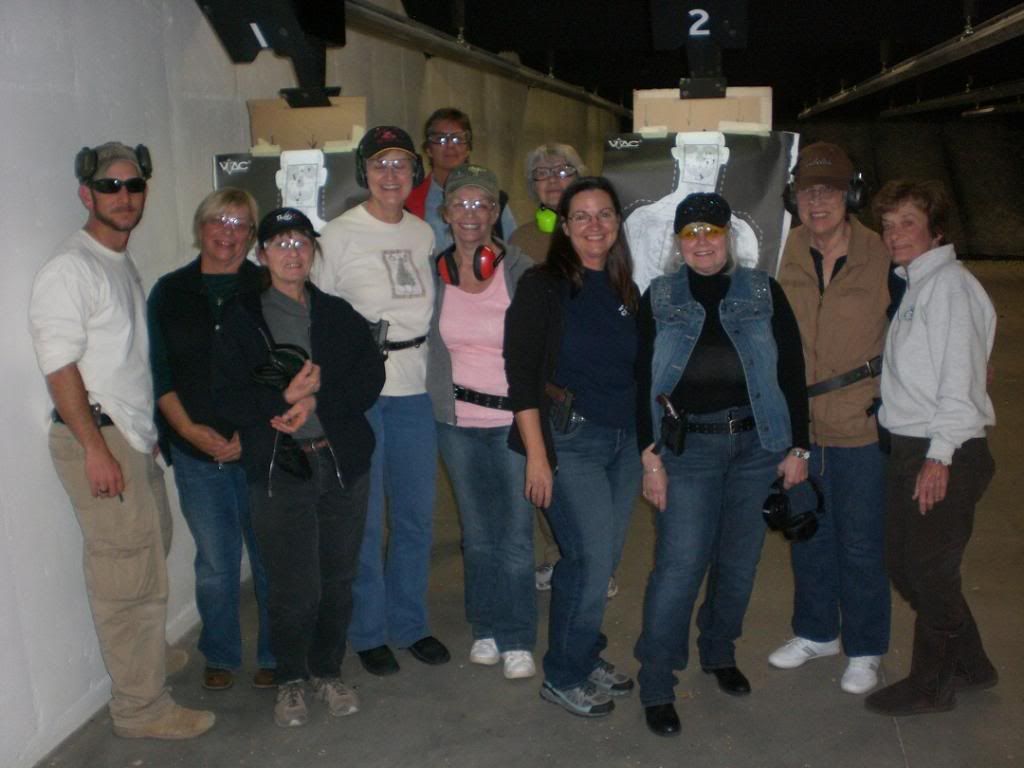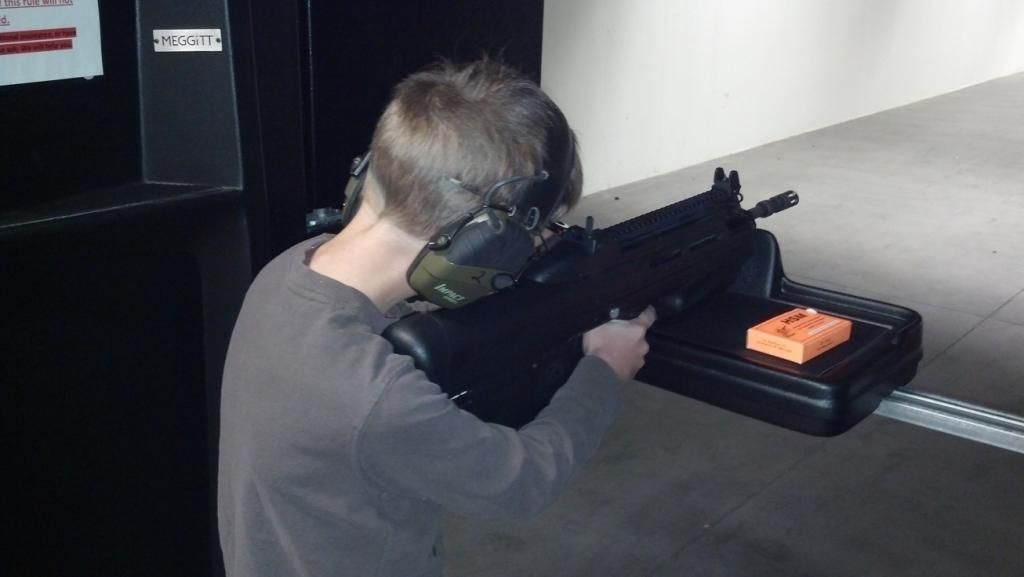Outdoor Ranges
We train at outdoor ranges all over the southwest, and from well-developed square ranges with full service facilities to simple private ranges with a mountain as a backstop, training outside offers several major advantages:
- The ability to shoot in several different directions, not just straight forward.
- Training in adverse conditions (hot, cold, wind, etc.) stresses fundamentals and allows for a true test of your skills.
- Firing lines can be bigger with more capability for movement and alternate shooting positions, such as fighting from the ground or shooting from a vehicle.
- Lower cost, especially in locations where public land is available for training or shooting.
- Shooting to extended ranges as far as the eye can see.
- Utilizing different types of targets, from traditional paper to steel and exploding targets.
- Being outside and breathing fresh air is good for you!
Anytime that you get something, you give something, however, and that is certainly true with outdoor ranges. Here are some potential downsides to training outdoors:
- Weather is a major contributing factor, and while some of us enjoy training in adverse conditions, it can be a real challenge to teach the fundamentals of shooting to a new shooter in 30 degree weather while a 15mph wind blows across their face. Keeping a full firing line of shooters engaged for 8 hours in 100+ degree weather can also be a challenge.
- Target frames and target systems at outdoor ranges are largely static, meaning that while the shooter can move, the target cannot. While some ranges have moving target systems available, this is not common nor is it inexpensive.
- Learning how to shoot and move in low-light/no-light conditions, a skill that is absolutely vital to the armed citizen, police officer, or military member, can only be done once the sun goes down. Depending on the time of year, this can limit the amount of training that can be done due to time and temperature.
Indoor Ranges
We have recently started offering our training at an indoor shooting range, specifically the Copper Star Indoor Shooting Range, located in Camp Verde, AZ. This is a top-notch facility that is very modern and very capable of allowing you to do things that wouldn't be possible at an outdoor location. Unfortunately, not all indoor ranges are created equal, so be careful about which one you choose. Ask about their safety policies, who they allow to use the range and under what conditions, the quality of their air filtration systems, and when the last time they had a firearm-related accident was. That being said, here are some important advantages that indoor ranges have:
- They are not weather-dependant, so regardless of what's happening outside, you can always be training outside. And just because they aren't weather-dependant doesn't mean you can't add some adverse conditions inside. Want to train in the heat or the cold? Just adjust the thermostat.
- Due to the nature of the range, shooting at an indoor facility very realistically replicates what it would be like to fire you weapon inside of your home or other building. And while this may seem obvious, it's something that most shooters don't consider. If you plan on using that firearm in self-defense, you should know what it sounds and looks like when it's fired indoors, 'cause that's a whole new experience.
- Want some low-light conditions or darkness to train in or test gear with? No problem - just turn out the lights. You can also add different types of lights, such as red and blue flashing lights for law-enforcement training.
- Target carrier systems indoors are capable of doing things that it's very difficult to replicate outdoors. Want your target to charge you at adjustable speeds, or turn from a shoot target to a don't shoot target and back again? No problem.
- When checking point of aim/point of impact (POA/POI) or zeroing a firearm, it's easy to send the target out to an exact distance and then change that distance on the fly.
- Indoor ranges often have a selection of rental firearms, from the normal to the exotic, and they always have ammunition, hearing and eye protection, and other accessories available for purchase.
Just like an outdoor range has its downsides, so does an indoor range, so here's a few of the limitations you may experience:
- Shooting indoors is LOUD, much louder than outdoors. It's best to wear ear plugs and muffs, preferably electronic muffs.
- There's only so much room, meaning that you may have to wait to shoot, and once you get in there, you'll usually be paying by the hour if there are other people waiting for you to finish.
- That limited space also means that there are some types of training and shooting that you cannot do, such as moving and shooting, shooting in multiple directions, shooting from certain alternate positions, etc.
- Lead contamination is an always present factor, and regular soap and water isn't enough to wash up with. Use deleading soap or deleading wipes on your face and hands after each range use, especially if you are going to eat something. If you are in there for an extended period of time, make sure to wash your clothes and take a shower as soon as possible, and don't wear the shoes you were wearing in the range inside your home (especially if you have little kids who may crawl on the floor).
The differences between outdoor and indoor ranges mentioned above have an effect on the training courses that we offer, and while the concepts that we teach in each course stay the same, the skills that are taught vary. There are even some courses that we simply cannot teach at an indoor range, and some that we cannot teach at an outdoor range. If you've taken one of our courses indoors, you've had a different experience than if you would have taken it outdoors, and vice versa. This is simply because of the benefits and the limitations of each location. As an example, in our Defensive Handgun course, we utilize a lot of movement on the student's part while they engage steel targets of various sizes when this class is taught outdoors. This can cannot be done indoors, however, so we instead utilize the forward, backward, and turning movement capabilities of the targets themselves, which have been pre-programmed beforehand, and use full-size 3D torso targets wearing clothing to teach the same concepts.
Any student who takes the same course but at different range locations will have a slightly different experience, and have the opportunity to build different skills. This is part of the reason that we offer all of our students a chance to take the same courses over again as a refresher for only 50% of the normal course cost. Many of our students take advantage of this, even training at the same locations just to reinforce what they have already learned and to refresh what they have forgotten since the first time around.
As always, there's no such thing as too much training, and there's no such thing as someone who knows everything about anything, so take advantage of every chance you have to shoot and train in a new location, whether outdoors or indoors, as each experience will offer you new opportunities to expand and increase your skills as a Sheepdog.
Stay Aware, Stay Safe, and Train Hard.





